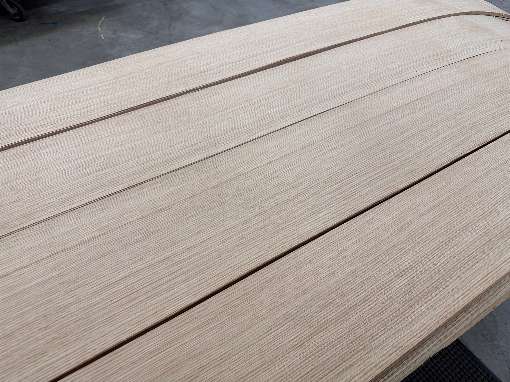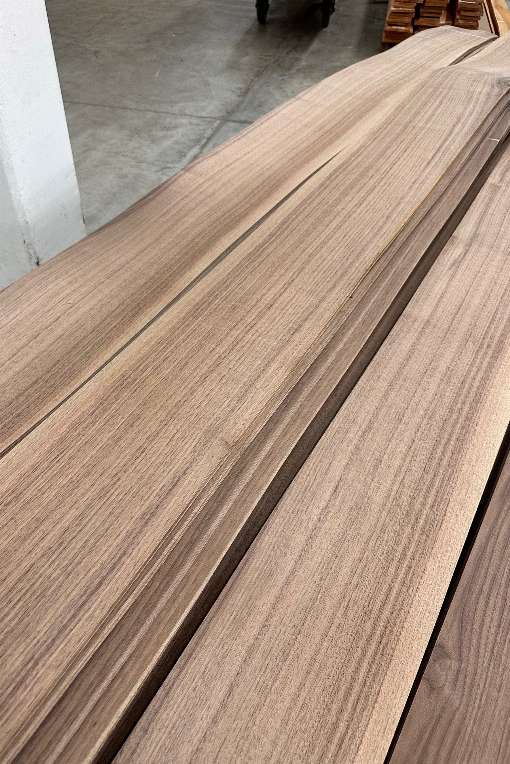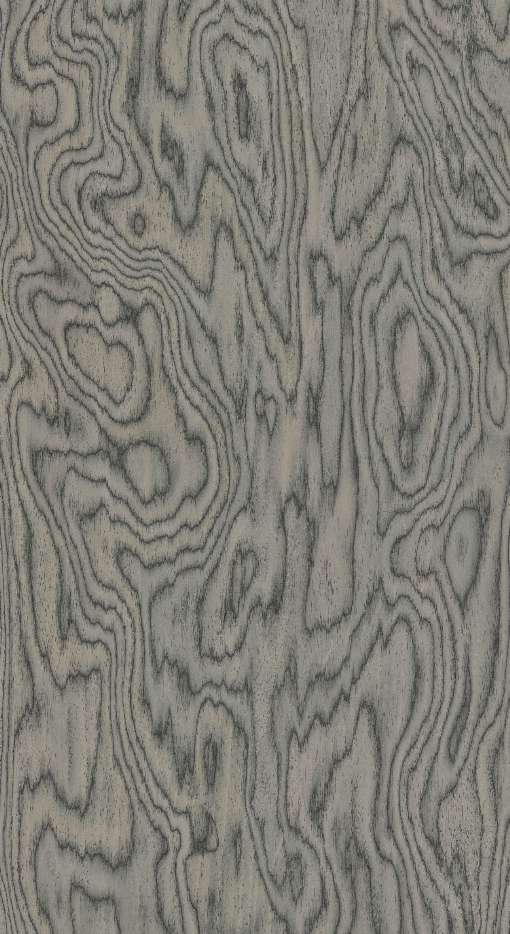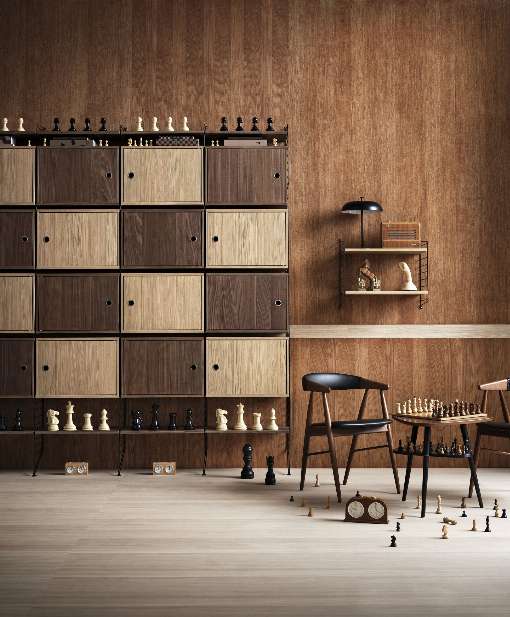28.07.2025
Veneer trends 2025:
Zülpich. Veneer is real wood in its most economical form. Depending on requirements, it is obtained from specially selected tree trunks by peeling, cutting or sawing, resulting in extremely thin or slightly thicker sheets. This makes it the thinnest solid wood in the world. But which woods are currently winning the race? The Veneer + Nature Initiative (IFN) provides information on this:
A wide variety of hardwoods and softwoods are suitable for the production of sustainable veneers. Oak is currently in high demand among hardwoods, often with a rough-sawn or brushed surface. ‘It is particularly suitable for furniture and a wide range of interior design applications and is characterised by a beautiful, even grain,' explains Dirk-Uwe Klaas, Managing Director of the Initiative Furnier + Natur (IFN). Oak is popular in shop and residential construction, where a bright and friendly atmosphere is important, but ash and birch are also increasingly in focus here. ‘The situation is different in luxury hotels, for example. Here, walnut is predominantly used,' says Klaas. This is because hotels tend to favour classic designs, which can be achieved excellently with dark woods such as walnut with its characteristic grain. "Good rift qualities are in demand here, for example, where the annual rings of the wood run almost perpendicular to the surface. The homogeneous surface created in this way gives veneered objects a special exclusivity,‘ says the IFN managing director. Veneers made from softwoods are becoming more popular again this year than in previous years - fir and spruce are particularly prominent here. 'Resin-free qualities are in demand here for furniture construction," explains Klaas. Design veneers with varied grains and in a wide range of colours are also increasingly in demand. ‘In conclusion, it can be said that regardless of the type of wood, the thickness of the material and the desired application, veneer is incredibly resource-efficient and is therefore rightly used for all conceivable purposes,' concludes the association's managing director. IFN/DS
Initiative Veneer + Nature (IFN)
The Initiative Furnier + Natur (IFN) e.V. was founded in 1996 by the German veneer industry and its partners. Today it is supported by European companies from the veneer industry, the trade and the veneer processing industry as well as trade associations of the wood industry. The aim of the association is to promote veneer as a natural all-round material.
Further information about the IFN at:
furnier.de/en
wood-veneer-stories.de
facebook
linkedin
instagram
Image 1: Oak: characteristic appearance with attractive grain. Photo: Roser AG
Image 2: Dark walnut veneer can be combined well with veneers made from light woods. Photo: Roser AG
Image 3: A real eye-catcher: designer veneers such as this ‘Sottsass veneer'. Photo: HWB Furniere & Holzwerkstoffe
Image 4: Different veneers and colours have been cleverly combined here. Photo: String Furniture
28 July 2025
Initiative Furnier + Natur e.V. - Antonigartzem 1 - D-53909 Zülpich - m +49 171 2116 650 www.furnier.de - www.veneer.eu - presse@furnier.de
Veneer trends 2025:
These wood species are leading the way in the world's thinnest solid wood
Zülpich. Veneer is real wood in its most economical form. Depending on requirements, it is obtained from specially selected tree trunks by peeling, cutting or sawing, resulting in extremely thin or slightly thicker sheets. This makes it the thinnest solid wood in the world. But which woods are currently winning the race? The Veneer + Nature Initiative (IFN) provides information on this:
A wide variety of hardwoods and softwoods are suitable for the production of sustainable veneers. Oak is currently in high demand among hardwoods, often with a rough-sawn or brushed surface. ‘It is particularly suitable for furniture and a wide range of interior design applications and is characterised by a beautiful, even grain,' explains Dirk-Uwe Klaas, Managing Director of the Initiative Furnier + Natur (IFN). Oak is popular in shop and residential construction, where a bright and friendly atmosphere is important, but ash and birch are also increasingly in focus here. ‘The situation is different in luxury hotels, for example. Here, walnut is predominantly used,' says Klaas. This is because hotels tend to favour classic designs, which can be achieved excellently with dark woods such as walnut with its characteristic grain. "Good rift qualities are in demand here, for example, where the annual rings of the wood run almost perpendicular to the surface. The homogeneous surface created in this way gives veneered objects a special exclusivity,‘ says the IFN managing director. Veneers made from softwoods are becoming more popular again this year than in previous years - fir and spruce are particularly prominent here. 'Resin-free qualities are in demand here for furniture construction," explains Klaas. Design veneers with varied grains and in a wide range of colours are also increasingly in demand. ‘In conclusion, it can be said that regardless of the type of wood, the thickness of the material and the desired application, veneer is incredibly resource-efficient and is therefore rightly used for all conceivable purposes,' concludes the association's managing director. IFN/DS
Initiative Veneer + Nature (IFN)
The Initiative Furnier + Natur (IFN) e.V. was founded in 1996 by the German veneer industry and its partners. Today it is supported by European companies from the veneer industry, the trade and the veneer processing industry as well as trade associations of the wood industry. The aim of the association is to promote veneer as a natural all-round material.
Further information about the IFN at:
furnier.de/en
wood-veneer-stories.de
Image 1: Oak: characteristic appearance with attractive grain. Photo: Roser AG
Image 2: Dark walnut veneer can be combined well with veneers made from light woods. Photo: Roser AG
Image 3: A real eye-catcher: designer veneers such as this ‘Sottsass veneer'. Photo: HWB Furniere & Holzwerkstoffe
Image 4: Different veneers and colours have been cleverly combined here. Photo: String Furniture
28 July 2025
Initiative Furnier + Natur e.V. - Antonigartzem 1 - D-53909 Zülpich - m +49 171 2116 650 www.furnier.de - www.veneer.eu - presse@furnier.de

Image 1: Oak: characteristic appearance with attractive grain. Photo: Roser AG

Image 2: Dark walnut veneer can be combined well with veneers made from light woods. Photo: Roser AG

Image 3: A real eye-catcher: designer veneers such as this ‘Sottsass veneer’. Photo: HWB Furniere & Holzwerkstoffe

Image 4: Different veneers and colours have been cleverly combined here. Photo: String Furniture